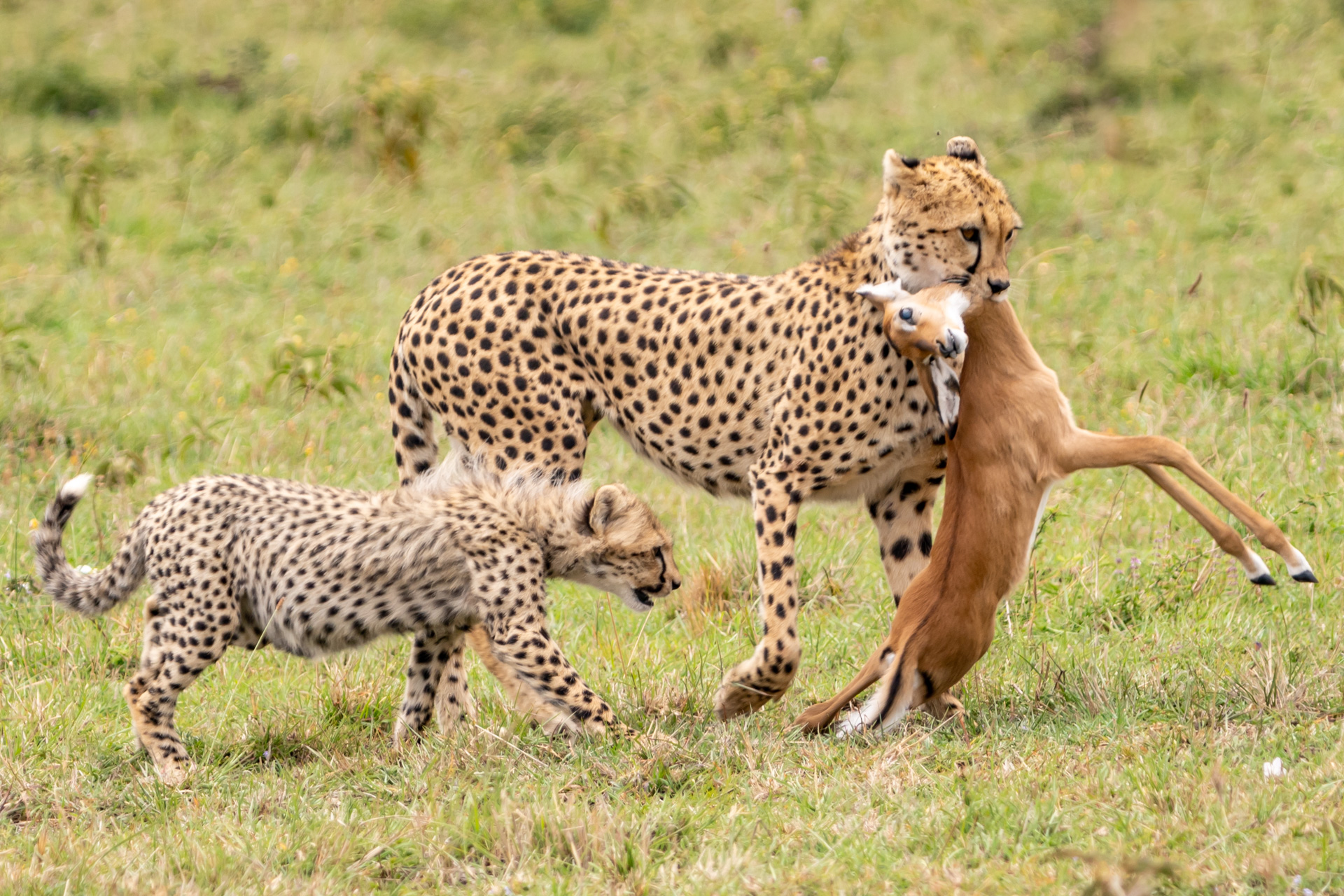You don't have to go far to see wonderful sightings in the Triangle. This week, just down the escarpment within view of the lodge, I came across the Angama lioness. Recently, we confirmed that she has two cubs but this time she was alone and on the move. I watched as she walked past some giraffes that immediately noticed her as she slowly climbed up a mound and very carefully scanned her territory from one side to the other.
Just down from the Oloololo Escarpment, there is a small ravine that has always fascinated me. From a certain angle, it looks like a cross-section of the earth's crust — layers and layers can be seen in the sediment and soil, which tells a story of time, with a scale much different than my own. Over time, water has carved this beautiful scene into existence.
Not far from Shiheni, we came across the Sausage Tree pride with some healthy new cubs. Lions have a reputation for sleeping for most of the day but this is not the case when there are cubs around. It's hard to imagine these sweet bundles of energy are destined to become fierce and skilled hunters as they get older.
Angama Guide, Jeremy, saw several male lions in the Salt Lick area with a buffalo carcass that was a few days old. The hyenas of the sky are always quick to notice when a kill is nearby, so while Jeremy watched one of the male lions eat, he noticed the vultures slowly moving onto the scene. The lion chased them off as long as he could but after some time he gave up and proceeded towards a small pool of water to cool off.
There are several species of vultures in the Mara but the largest is the lappet-faced vulture. You can clearly see the size difference between this massive bird and the smaller white-backed vultures when they're seen together. It's amazing to witness the way these animals are able to manoeuvre through the clouds and navigate the skies.
Leopards often weave in and out of sight and are some of the hardest animals to spot (no pun intended). But Ekidor, one of Angama's Guides, got lucky when he came across a lone male leopard in the BBC Area near Laga ya Benjamin. He slowly came down a tree and sat beautifully on a mound scanning the horizon.
We also spotted Ruka and Rafiki who have been moving in and out of the Serengeti for the past few months, but this time they were not far from where some lions were with a buffalo kill. Cheetahs and lions don't share territories and often fight for prey. As lions are bigger and stronger, unfortunately, there are many situations where cheetahs are chased away, hurt or even killed by their counterparts.
During the heat of the day, I slowly drove past a bush and was just as surprised to see a hippo as it was to see me. It quickly exposed its teeth, a sign of intimidation, as it started to run towards the vehicle. From its size, it was clear that it was a lone male that had probably been kicked out of the river — we were not anywhere close to it and he seemed highly agitated. I quickly snapped a photo as a giraffe looked on, then dropped my camera and sped off as fast as I could.
An exciting sighting came in from Head Guide, Sammy, who came across Mary and her calf, one of the well-known black rhinos around the Triangle. She is recognisable by her unique horn structure and scar on her back left leg. The Mara Conservancy is tirelessly monitoring and protecting the numbers of these endangered animals in the Maasai Mara.
One of the most magical things about the Mara is the number of elephants. There are elephants in other parts of the world but it is hard to describe what it is like to be surrounded by a group of almost 60 massive creatures as they silently glide through the grass. Watching them interact with each other you understand the gentleness and grace they carry themselves with.

A year ago, Risasi was still devotedly feeding and caring for her three cubs. It's heartbreaking to know that just one cub remains and his future is anything but certain.
Filed under: This Week at Angama
Subscribe for Weekly Stories
Comments (3):
16 October 2023
Angama it has merged to be the best in the entire maasai mara place to be just because the beauty places in the camp.
15 October 2023
You had your photographer include focal lengths in the pictures but that only lasted a week. It helps so much imagine the pictures so please encourage them to always include that info also! Thanks (I will be there July 2024!) Jud Cuttino

Angama Image Gallery